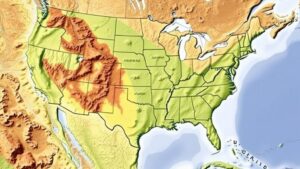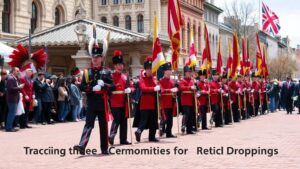Exploring Pioneer Blacksmith Guilds for Clues to Hidden Relics
Exploring Pioneer Blacksmith Guilds for Clues to Hidden Relics
The exploration of pioneer blacksmith guilds offers a fascinating lens through which to examine the craftsmanship and community importance of blacksmithing in early American society. As a cornerstone of early industrial processes, blacksmiths played essential roles in development, serving not only as metalworkers but also as vital community members in burgeoning towns across the United States. This article delves into the historical significance of pioneer blacksmith guilds, the artifacts they produced, and the clues these relics provide for understanding the socio-economic fabric of their times.
Historical Background of Blacksmithing in America
The practice of blacksmithing traces back to ancient civilizations, with significant developments occurring throughout the Middle Ages. In America, blacksmithing flourished during the 18th and 19th centuries, aligning with the countrys westward expansion. Blacksmiths were critical in the establishment of thousands of towns and settlements, providing essential services required for daily life. Key innovations, such as the anvil and forge, became staples in these workshops.
By 1800, the United States boasted approximately 1,200 blacksmiths. This number ballooned as the population grew, particularly during the California Gold Rush of 1849, which further fueled demand for tools and equipment. Blacksmith guilds emerged to provide training, support business practices, and uphold standards within the trade, significantly shaping the craftsmanship of the era.
The Role of Guilds in Blacksmithing
Guilds served as crucial institutions in controlling the quality and practice of blacksmithing. They provided a structure for apprenticeships, ensuring that skills passed from master to apprentice were consistent and of high quality. American Blacksmiths’ Association, formed in the early 20th century, is a prime example of the evolution of these organizations.
- Apprenticeship Programs: These programs ensured the transfer of skills such as forging, welding, and finishing techniques.
- Standardization: Guilds enforced quality standards that craftsmen were expected to adhere to, which helped maintain craftsmanship integrity.
- Community Networking: Guilds facilitated community gatherings, fairs, and competitions that fostered relationships and knowledge sharing among craftsmen.
Artifacts and Relics of Blacksmiths
Blacksmiths produced a wide variety of artifacts ranging from simple household tools to intricate ornamental ironworks. These relics offer invaluable insights into their practices and societal roles. Notable items include:
- Tools: Hammers, tongs, and chisels, each demonstrating the blacksmiths expertise and technological capabilities.
- Hardware: Nails, locks, and hinges that reveal the daily needs of burgeoning communities.
- Artistic Works: Decorative items such as gates and furniture fittings that showcase aesthetic sensibilities of the time.
Analyzing these artifacts can help researchers and historians understand the evolution of technology, trade practices, and even economic fluctuations in early American society.
Field Studies: Archaeological Evidence
Archaeological excavations at sites of historic blacksmith guilds have uncovered a wealth of information. For example, findings at the Old Sturbridge Village site in Massachusetts, which seeks to emulate a 19th-century rural New England town, displayed numerous tools and remnants from blacksmith workshops.
In 2010, excavations in California revealed remnants from blacksmith operations that supported the Gold Rush expeditions. Artifacts such as hammers and smithing tools were found alongside remnants of horseshoes, indicating the flourishing demand for practical items during this influx of settlers.
Preservation of Blacksmith Relics
The preservation of blacksmith relics is essential for continued historical research and public education. Institutions like the National Park Service collaborate with local communities to safeguard these artifacts for future generations. Notable efforts include:
- Conservation Programs: Dedicated initiatives to restore and maintain blacksmith tools and structures in historical societies.
- Educational Outreach: Programs aimed at educating the public on the importance of blacksmithing in American history, including workshops and demonstrations.
Conclusion
Exploring pioneer blacksmith guilds provides essential insights into the development of early American society and its economic conditions. The artifacts produced in these guilds not only reflect the craftsmanship of the time but also serve as tangible connections to the community dynamics that shaped early settlements. Continuing to investigate and preserve these relics will contribute significantly to our understanding of American history and the evolution of industrial practices.
For future research, further archaeological digs and studies in various regions could yield more comprehensive data on blacksmithing practices across different locales, potentially revealing regional variations that may shed new light on American craftsmanship and culture.



